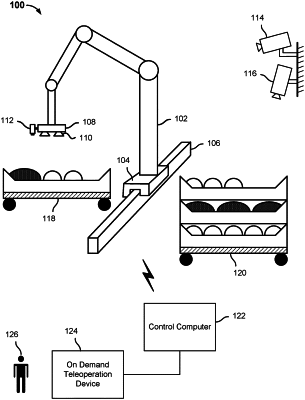| CPC B25J 9/1671 (2013.01) [B25J 9/1612 (2013.01); B25J 9/163 (2013.01); B25J 9/1661 (2013.01); B25J 9/1674 (2013.01); B25J 9/1697 (2013.01)] | 20 Claims |

|
1. A system, comprising:
a communication interface; and
a processor coupled to the communication interface and configured to:
receive from a robotic control system, via the communication interface, a communication indicating a set of actions to be performed by a set of robotic elements, wherein a first robotic element of the set of robotic elements is associated with a first robot and a second robotic element of the set of robotic elements is associated with a second robot, wherein the first robotic element is a first end effector and the second robotic element is a second end effector;
simulate performance of the set of actions by the set of robotic elements including the first end effector and the second end effector, wherein a simulation of the performance of the actions by the first end effector and the second end effector includes simulating a manner of using the first end effector and second end effector at a physical source location to identify one or more problems associated with implementing the set of actions at the physical source location, and inefficiencies or conflicts at one or more physical destination locations caused by implementing the set of actions at the physical source location, wherein the set of actions are updated based on a result of the simulation;
update a state tracking data to reflect a virtual change to one or more state variables as a result of simulated performance of the set of actions; and
report to the robotic control system, via the communication interface, successful completion of the set of actions by the robotic elements.
|